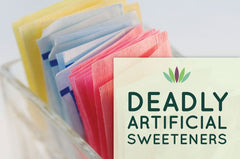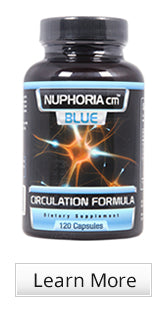There is no an product in your account
please add some product to cart.
10 Most Dangerous Neurotoxins in Your Food
Posted by John Coppola on 22 Jan, 19
Do you dine out at restaurants, eat foods that come from a can or a box, drink diet beverages, or eat junk food? If you are like most Americans, the answer to this question is resoundingly…YES!
Did you know that these foods contain chemicals, known as, neurotoxins that can destroy your brain cells, damage your nerves, impair your immune system and cause you to suffer from anxiety or depression?
A neurotoxin is a “substance(s) that interferes with the electrical activity of nerves. This can include interfering with their normal function or preventing them from functioning, at all. Neurotoxins interact with nerve cells by overstimulating them to DEATH- quite literally.
For some people, symptoms of exposure occur immediately. For instance, when dining at a Chinese/Asian food restaurant -which typically uses sauces containing MSG- people who are sensitive to MSG can experience an excruciating headache immediately. For others, the symptoms may be delayed and cumulative.
Studies have shown that neurotoxins can shorten the life span of nerve cells. These toxins have been linked to brain disorders, Peripheral Neuropathy and neurodegenerative diseases, such as Alzheimer’s, Huntington’s Chorea and Parkinson’s disease.
Over 70 neurotoxins are commonly used as food additives. All of them affect your health in a similar manner – they overstimulate the nerve cells resulting in damage and premature death of the nerve.
The 10 Most Common Neurotoxins That You May Be Consuming On A Regular Basis
1. MSG
Also known as sodium glutamate, this is a flavor enhancer used in processed (boxed or canned foods), restaurant food, fast food, pet food and even baby food. Independent researchers believe that MSG plays a significant role in neurodegenerative brain diseases (Alzheimer’s, Parkinson’s and Huntington’s disease).
MSG is highly addictive.
Due to increased public awareness of the health hazards of MSG- the commercial food industry has become highly deceptive. They frequently disguise the presence of MSG under alternative names such as:
- Natural flavors
- Hydrolyzed (vegetable) protein
- Plant Protein Extract
- Spices or seasonings
- Sodium Caseinate or Calcium Caseinate
- Yeast extract
- Textured Protein or Textured Vegetable Protein (TVP)
- Autolyzed yeast
- Carrageenan
- Malt Extract or Malt Flavoring
- Bouillon

2. Aspartame
An artificial sweetener found in sugar free gum, diet foods and drinks. Most commonly sold as Equal, Nutrasweet, AminoSweet, Spoonful, and Advantame. Most aspartame is made from the fecal matter of genetically modified bacteria (GMO). Studies have linked aspartame to diabetes, migraines, kidney failure, seizures, blindness, obesity, neurological disorders, mental illness and brain tumors.
3. Sucralose
Another artificial sweetener that is commonly used in diet beverages and is 600 times sweeter than table sugar. It is sold under the brand name, Splenda. Sucralose was accidentally discovered while doing research to create a new insecticide, which is why some researchers suggest that sucralose should be listed in the insecticide category. This neurotoxin is regarded as a chemical cousin to DDT. Sucralose is a chlorinated compound. When the body breaks this type of chlorinated compound, it releases toxic chemicals.

4. Aluminum
A heavy metal commonly found in drinking water, baking powder, cookware, antacids, deodorants and vaccines. It is linked with causing Alzheimer’s and other neurological diseases. Aluminum is hard for the body to absorb, however, citrate or citric acid can dramatically increase its absorption. Vaccines are one of the major contributors to aluminum toxicity, because the aluminum is injected directly into the body.
5. Mercury
Mercury heavy metal is one of the most toxic neurotoxins, because it easily destroys brain tissue. This heavy metal is common in fish products, vaccine and amalgam fillings (also known as silver fillings). Mercury can be found in drinking water, too. Most exposure and toxic accumulation in the body occurs from eating contaminated fish, vaccines, and silver fillings. Amalgam (silver) fillings are so toxic that the European Union has banned the use of these fillings for children under age 15, pregnant woman and breastfeeding mothers.

6. Fluoride (sodium fluoride)
Most commonly found in drinking water and conventional toothpaste. However, most people are unaware that certain teas contain fluoride, along with kombucha. Teas typically found to contain Fluoride are Black Teas, Oolong, White or Green Tea. As much as, 1 mg to 9 mg of fluoride have been found in both conventional and organic teas.
Did you know Fluoride was used to kill rats before it was introduced into consumer products? Fluoride used for consumer products is a mixture of many hazardous chemicals. It has been found to be so toxic by the EPA that fluoridated toothpastes must now carry warning labels.

7. High Fructose Corn Syrup (HFCS)
HFCS indirectly does significant damage to peripheral nerves. It contains toxic levels of mercury due to the manufacturing process. HFCS does not require digestion, and as a result is rapidly absorbed into the blood stream where it is sent straight to the liver. This process triggers lipogenesis (resulting in fatty liver) and is a major cause of liver damage.

8. Diacetyl
A food additive used in butter flavoring. It’s most commonly found in microwave popcorn and movie popcorn. Diacetyl does extensive damage to the brain and peripheral nerves. It has the ability to cross the Blood-Brain-Barrier (BBB) and cause direct injury to brain cells. Research has shown that it increases beta-amyloid clumping, an Alzheimer pre-cursor. You won’t usually see Diacetyl on a food label, but if you see “artificial butter flavor” or “natural flavors” on the label, assume the product contains this neuro-toxin.
9. Hydrolyzed Vegetable Protein (HVP)
This is considered to be one of the worst neurotoxins because it contains both MSG and Aspartate. It’s commonly found in chips, soups, broth, imitation meat products, hot dogs, cheese powder, veggie burgers, gravy, dipping sauces and pet food. It can also masquerade under different names:
- Hydrolyzed Soy Protein
- Hydrolyzed Wheat Protein
- Hydrolyzed Whey Protein
- Texturized Vegetable Protein (TVP)
Much like MSG, this neurotoxin can overstimulate nerves to the point of early death.
10. Calcium Caseinate / Sodium Caseinate / Potassium Caseinate
Commonly used as a texturizer for frozen desserts but can also be found in coffee creamers, cheese, protein supplements and energy bars. It kills both brain cells and nerve cells.
Protect Your Health

It’s up to you to protect yourself and your family from these dangerous neurotoxins. First be aware that food companies add neurotoxins to ALL processed and packaged foods. This includes processed or packaged foods marketed as healthy, organic or vegetarian.
Avoiding these neurotoxins is simple and doesn’t require you moving to a remote island or dining on only vegetables. Follow these simple steps.
1. Read labels
Reading food labels is imperative. Don’t assume because a product is marketed as healthy, nutritious or even MSG-free…that it is.
2. Keep A List Handy
Make a list of these top 10 neurotoxins and carry it with you when you go shopping. Make sure you include all the alternate names used to disguise neurotoxins (listed above)
3. Filter the water that you drink
Home water filtration systems have become very economical. You can purchase an under the sink carbon filtration system or reverse osmosis system for as little as $200. Alkalinizing water systems may deliver excellent pH but does not necessarily filter out toxins. Don’t rely on your Brita pitcher, either. It is extremely limited in filtering toxins.
4. Eat Organic
Eating organic may be more expensive but is an excellent investment in your health. If your budget is tight, then focus on only purchasing organic produce from the ‘Dirty Dozen List’.
5. Enhance Your Cooking Talents
If you want you and your family to stay healthy, it’s time to take back control. This starts with preparing meals at home. You don’t need to be an Emeril Lagasse or Wolfgang Puck. There are many delicious recipes that are simple and easy to prepare. Let your family enjoy healthful meals instead of processed and packaged food. Know that even if you’re dining at a 5 star restaurant, you’re still not safe from neurotoxins.
INSIGHTS
Want to protect your brain and nerve cells from damage caused by neurotoxins, poor diet, stress and trauma? Make sure to supplement with Acetyl L Carnitine (ALC).
Research has proven that Acetyl L Carnitine supplementation facilitates repair to damaged brain and nerve cells caused by poor nutrition, stress, toxins, and trauma. It is especially useful in protecting injured brains from damage, such as in stroke patients. Stroke patients recover faster and better on 1500 mg of ALC per day.
ALC’s powerful effects make it useful to protect against damage from the following neurotoxins and diseases:

- Chemotherapy
- Alcohol
- MSG
- Aspartame
- Prescription drug side effects
- Recreational drugs
- Alzheimer’s
- Diabetic Nerve Degeneration
Research reveals that ALC benefits are widespread throughout the entire body. Studies show the following benefits:
- Improves cardiovascular health and prevents damage to heart muscle tissue
- Protects against muscle-wasting diseases (including the heart muscle)
- Protects peripheral nerves from neurotoxin damage from chemotherapy and other neurotoxic chemicals (see list above)
- Increases energy levels in chronic fatigue patients
- Prevents cataracts. One of the mechanisms of cataract formation is a process called glycation.
- Slows progression of Alzheimer’s
- Enhances memory and alertness
Many people ask me how they can maximize their benefits with ALC. One of the things we recommend for our patients is taking NUPHORIA Blue.
NUPHORIA Blue contains therapeutic dosages of ALC to protect peripheral nerves from damage and aids in their repair. This supplement is highly recommended for people looking to slow down ‘Brain Aging, dementia or Alzheimers. It’s also a great supplement for merely improving mental acuity and memory.
Because NUPHORIA Blue is complexed with L-citrulline it also increases circulation and nitric oxide production. How much should you take? The dosage for healthy people is 1000 to 2000 mg per day. Those with neurological problems (brain and peripheral nerves) would do better with 3000 mg per day. Adding 100 to 300 mg per day of CoQ10 and 300 to 600 mg of alpha lipoic acid (ALA) per day enhances the effect of ACL. In fact, one study found that people taking ALC coupled with ALA enhanced nerve regeneration. Nutrients that support Acetyl L Carnitine metabolism include alpha lipoic acid, B vitamins, CoQ10, magnesium, and vitamins C and E.
 This blog has been provided by Dr. John Coppola, D.C. and Dr. Valerie Monteiro, D.C. Dr. Coppola and Dr. Monteiro are the founders of the San Antonio Neuropathy Center, and Precision Sport & Spine. They are the leading experts in the field of neuropathy and specifically drug free nerve repair. They are the authors of the critically acclaimed book "Defeat Neuropathy Now .... In Spite of Your Doctor. The doctors have over 25 years of clinical experience.
This blog has been provided by Dr. John Coppola, D.C. and Dr. Valerie Monteiro, D.C. Dr. Coppola and Dr. Monteiro are the founders of the San Antonio Neuropathy Center, and Precision Sport & Spine. They are the leading experts in the field of neuropathy and specifically drug free nerve repair. They are the authors of the critically acclaimed book "Defeat Neuropathy Now .... In Spite of Your Doctor. The doctors have over 25 years of clinical experience.
If you would like to reach the doctors regarding a specific health problem, you may email them at info@bodiesrebuilt.com.





